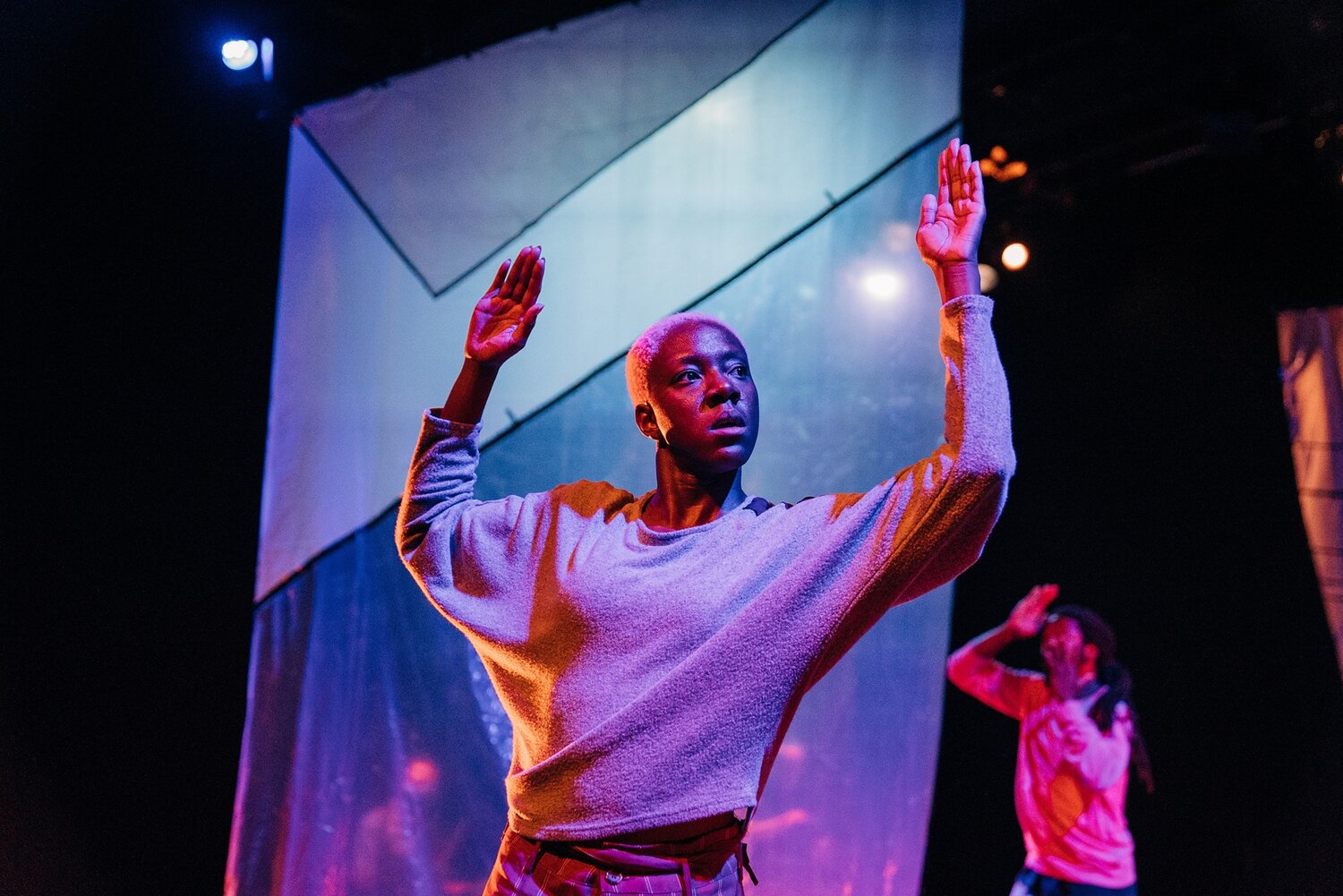Float like a butterfly, sting with unpredictability

PAPILLON uses the unexpected to create new meaning and keep things feeling fresh.
In a world filled with unpredictability, it can feel like at times the only constant is change itself. Exploring this concept onstage can lead to different forms of improvisation, which tests performers and adds to the live-ness of a performance. For PAPILLON, a high-powered, experimental movement piece that was presented at the Storefront Fringe Festival and supported by The Kick and Push Festival, this improvisation contributed both aesthetically and thematically.
Created by the Montreal-based interdisciplinary artist collective We All Fall Down, PAPILLON uses contemporary dance and live experimental music to explore notions of chaos and predictability. Through the repetition of sharp choreography and practiced sequences, soloists Nindy Banks, Mecdy Jean-Pierre, and Victoria Mackenzie find meaning in a technological soundscape, performed by Rémy Saminadin, Roger White, Ted Yates.
While I can not be considered fluent in the language of dance and movement, I was certainly able to find meaning in PAPILLON. In one sequence, Banks and Mackenzie repeat the same movements over and over again in a feat of mental and physical endurance. Suddenly, Banks breaks free from this trance-like state and builds onto the sequence, creating a new flow and direction. This breakaway then affects Jean-Pierre, who adjusts his movements to accommodate the shift in activity.
This sequence made me wonder: when do we perform a task simply because it is how we’ve seen it done before, and what does it mean to perform it differently? What rifts exist in the world where one life decision can send ripples throughout the lives of others? How does our simply existing affect the lives of others? The dancers do an excellent job of posing these questions, and just long enough to consider them before they are (like the sequences) either expanded upon or tossed out altogether. The collective creates a predictable moment and then defies it, creating a cycle of selective repetition that keeps viewers on their toes.
Perhaps the most impressive feat for PAPILLON is the fact that the soloists perform to live, onstage, experimental music. While certain sections of the performance may have been predetermined (e.g. the placement of the soloists during the climactic sequence), a good deal of their work must have been in-the-moment reaction.
By structuring their performance in this way, We All Fall Down is truly playing with predictability. Not only is the audience actively exploring the work of the performers, but through simultaneously listening and reacting to the music with their movements, so too are they. This structuring both illuminates the talent of these performers and creates an electric sense of liveness throughout the piece (even despite its online viewing).
Whether or not you have experience in watching or performing dance or movement, I would recommend giving PAPILLON a try. Through their practiced cohesion and diligent skills of reaction, the collective critiques predictability and creates new ways of being.
PAPILLON was a part of the 2021 Storefront Fringe Festival and was streamed online. Though the viewing opportunity has closed, you can see more work from We All Fall Down here.
